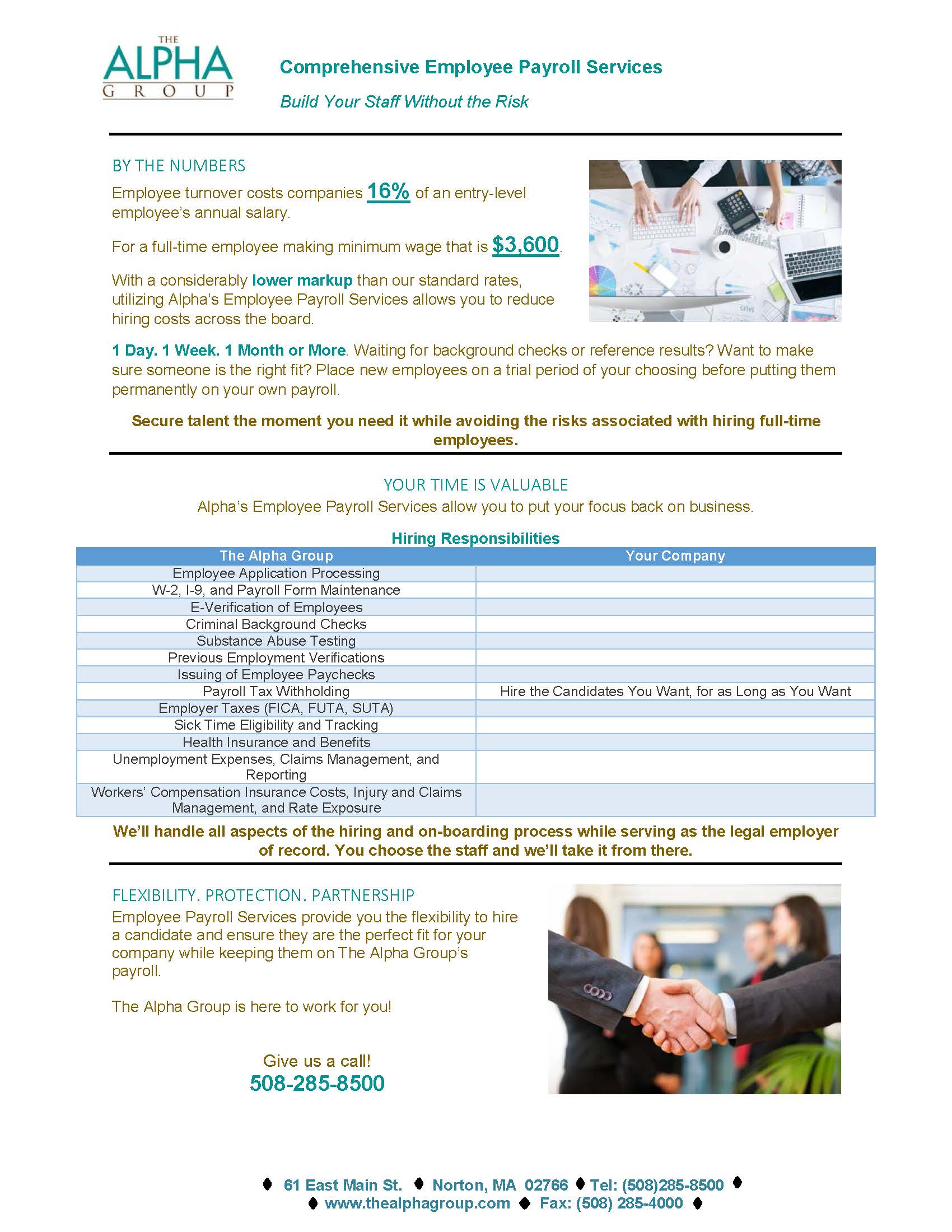This report is published eight times per year. Each Federal Reserve Bank gathers anecdotal information on current economic conditions in its District through reports from Bank and Branch directors and interviews with key business contacts, economists, market experts, and other sources.
May is nationally known as ALS Awareness Month! ALS stands for amyotrophic lateral sclerosis, which is a motor neuron disease that affects a person’s ability to walk, dress, speak, swallow, and eventually breathe. About 6,000 people in the United States are diagnosed with ALS every year, yet there is no known cause or cure.
ALS is also commonly known as Lou Gehrig’s disease, which refers to the Yankee’s first baseman who passed away from the disease in 1941 at just 37 years old. Although there have been significant advances in research and treatment, there is still much more to learn about ALS.
ALS Awareness Month seeks to spread awareness, and encourages donations to support research, assist with family services, and provide financial support to individuals with ALS.
The Alpha Group will be accepting donations to benefit the Massachusetts Chapter of the ALS Association, and will also be participating in the Boston Walk to Defeat ALS in October. We will be joining Team Ienello, led by our Accounting & Payroll Coordinator, Hayley, whose father lost his battle with ALS in 2014.
We will be providing additional information as the Walk approaches, and if you are interested in joining or donating to Team Ienello please visit the team page!
This report is published eight times per year. Each Federal Reserve Bank gathers anecdotal information on current economic conditions in its District through reports from Bank and Branch directors and interviews with key business contacts, economists, market experts, and other sources.
Each month we select an employee who demonstrates excellent work ethic through productivity and diligence, is timely and loyal, and displays behavior that promotes the needs and goals of the client company while holding to a commitment of quality and professional growth.
April is Autism Awareness Month! Autism is a developmental disability that derives from an abnormality in the brain. It affects about 1 in every 68 births. It is characterized by difficulties with social and communication skills, repetition of behaviors, and resistance to major or minor changes in routine. Its full name is Autism Spectrum Disorder (ASD), which implies that some cases are more serious than others.
Although there is no cure for Autism, early intervention with children that do have Autism is vital to give them better brain function, communication skills, and social behaviors. The earlier it is detected, the more help a child can get. That is why it is very important to spread awareness about Autism Spectrum Disorder!
The Alpha Group is looking to help spread this awareness by holding a fundraiser. This will help raise funds toward public awareness, safety, family crisis assistance, job training, housing and research. Please feel free to stop by our office to make a small donation towards Autism Awareness.
Your Change Makes a Difference!
Organizations used to be able to cook up a successful sales team with a few basic ingredients: a quality product, a compelling compensation plan, a simple training program and effective sales tracking. Not so anymore. Millennials have changed the recipe.
Caught with a problem you cannot solve? Need new ideas and solutions? The process of brainstorming requires you to think out of the box that is keeping you in the problem. Here is a list of 25 brainstorming techniques you can use to get out of the situation you are in. From this list, you can assess what’s the best method for the issue you are facing and apply it accordingly.
- Time Travel. How would you deal with this if you were in a different time period? 10 years ago? 100 years ago? 1,000 years ago? 10,000 years ago? How about in the future? 10 years later? 100 years later? 1,000 years later? 10,000 years later?
- Teleportation: What if you were facing this problem in a different place? Different country? Different geographic region? Different universe? Different plane of existence? How would you handle it?
- Attribute change. How would you think about this if you were a different gender? Age? Race? Intellect? Height? Weight? Nationality? Your Sanity? With each attribute change, you become exposed to a new spectrum of thinking you were subconsciously closed off from.
- Rolestorming. What would you do if you were someone else? Your parent? Your teacher? Your manager? Your partner? Your best friend? Your enemy? Etc?
- Iconic Figures. This is a spinoff of rolestorming. What if you were an iconic figure of the past? Buddha? Jesus? Krishna? Albert Einstein? Thomas Edison? Mother Theresa? Princess Diana? Winston Churchill? Adolf Hitler? How about the present? Barack Obama? Steve Jobs? Bill Gates? Warren Buffet? Steven Spielberg? Etc? How would you think about your situation?
- Superpowers.This is another spinoff of rolestorming. What if you suddenly have superpowers? Superman? Spiderman? Wonderwoman? X-Men? The Hulk? One of the Fantastic Four? What would you do?
- Gap Filling. Identify your current spot – Point A – and your end goal – Point B. What is the gap that exists between A and B? What are all the things you need to fill up this gap? List them down and find out what it takes to get them.
- Group Ideation. Have a group brainstorming session! Get a group of people and start ideating together. More brains are better than one! Let the creative juices flow together!
- Mind Map. Great tool to work out as many ideas as you can in hierarchical tree and cluster format. Start off with your goal in the center, branch out into the major sub-topics, continue to branch out into as many sub-sub-topics as needed. Source Forge is a great open-source mindmapping software that I use and highly recommend.
- Medici Effect. Medici Effect refers to how ideas in seemingly unrelated topics/fields intersect. Put your goal alongside similar goals in different areas/contexts and identify parallel themes/solutions. For example, if your goal is to be an award winning artist, look at award winning musicians, educators, game developers, computer makers, businessmen, etc. Are there any commonalities that lie among all of them that you can apply to your situation? What worked for each of them that you can adopt?
- SWOT Analysis. Do a SWOT of your situation – What are the Strengths? Weaknesses? Opportunities? Threats? The analysis will open you up to ideas you may not be aware before.
- Brain Writing.Get a group of people and have them write their ideas on their own sheet of paper. After 10 minutes, rotate the sheets to different people and build off what the others wrote on their paper. Continue until everyone has written on everyone else’s sheet.
- Trigger Method. Brainstorm on as many ideas as possible. Then select the best ones and brainstorm on those ideas as ‘triggers’ for more ideas. Repeat until you find the best solution.
- Variable Brainstorming. First, identify the variable in the end outcome you look to achieve. For example, if your goal is to achieve X visitors to your website, the variable is # of visitors. Second, list down all the possibilities for that variable. Different variations of visitors are gender/age/race/nationality/occupation/interests/etc. Think about the question with each different variable. For example, for Genre: How can you get more females to your website? How can you get more males to your website? For age: How can you get more teenagers to your website? How can you get more adults to your website? And so on.
- Niche. This is the next level of variable brainstorming method. From the variations of the variable you have listed, mix and match them in different ways and brainstorm against those niches. For example, using the example in #14, how can you get more male teenagers to your website? (Gender & Age) How can you get more American female adults to your website? (Nationality, Gender & Age)
- Challenger. List down all the assumptions in your situation and challenge them. For example, your goal is to brainstorm on a list of ideas for your romance novel which you want to get published. There are several assumptions you are operating in here. #1: Genre to write: Romance. Why must it be that romance? Can it be a different genre? Another assumption is for a novel. #2: Length of the story: Novel. Why must it be a novel? Can it be a short story? A series of books? #3: Medium: Book. Why must be it a book? Can it be an ebook? Mp3? Video? And so on.
- Escape Thinking. This is a variation of Challenger method. Look at the assumptions behind the goal you are trying to achieve, then flip that assumption around and look at your goal from that new angle. For example, you want to earn more income from selling books. Your assumption may be ‘People buy books for themselves’. Flip the assumption around such that ‘People do NOT buy books for reading’. What will this lead to? You may end up with people buy books as gifts, for collection purposes, etc. Another assumption may be ‘People read books’. The flip side of this assumption may be people look at books (drawings). Escaping from these assumptions will bring you to a different realm of thought on how to achieve your goal.
- Reverse Thinking. Think about what everyone will typically do in your situation. Then do the opposite.
- Counteraction Busting. What counteracting forces are you facing in your scenario? For example, if you want to increase traffic to your website, two counteracting forces may be the number of ads you put and the pageviews of your site. The more ads you put, the more users will likely be annoyed and surf away. What can you do such that the counteraction no longer exists or the counteraction is no longer an issue? Some solutions may be 1) Get ads that are closely related to the theme of your site 2) Get contextual ads that are part of your content rather than separate, and so on.
- Resource Availability. What if money, time, people, supplies are not issues at all? What if you can ask for whatever you want and have it happen? What will you do?
- Drivers Analysis. What are the forces that help drive you forward in your situation? What are the forces that are acting against you? Think about how you can magnify the former and reduce/eliminate the latter.
- Exaggeration. Exaggerate your goal and see how you will deal with it now. Enlarge it: What if it is 10 times its current size? 100 times? 1000 times? Shrink it: What if it is 1/10 its current size? 1/100? 1/1000? Multiply it: What if you have 10 of these goals now? 100? 1000?
- Get Random Input. Get a random stimuli and try to see how you can fit it into your situation. Get a random word/image from a dictionary/webpage/book/magazine/newspaper/TV/etc, a random object from your room/house/workplace/neighborhood/etc and so on.
- Meditation. Focus on your key question such as ‘How can I solve XX problem?’ or ‘How can I achieve XX goal?’ and meditate on it in a quiet place. Have a pen and paper in front of you so you can write immediately whatever comes to mind. Do this for 30 minutes or as long as it takes.
- Write a list of 101 ideas. Open your word processor and write a laundry list of at least 101 ideas to deal with your situation. Go wild and write whatever you can think of without restricting yourself. Do not stop until you have at least 101
To Keep the Weight Off, Keep Tracking Your Diet
NEW ORLEANS — Keeping track of the foods you eat is an important strategy for weight loss, but continuing to monitor what you eat is also important to prevent regaining that weight. Now, a new study finds that stopping food tracking is linked to regaining weight.
In order to prevent re-gaining weight, people should make an effort four months after starting a diet to refocus on food tracking, according to the study, presented here Sunday (Nov. 13) at the American Heart Association's annual meeting called the Scientific Sessions.
The researchers found that people tended to stop dietary monitoring after about four months, and that this was followed by regaining weight, said Qianheng Ma, a public health researcher at the University of Pittsburgh and the lead author of the study.
The effects of food tracking, or "dietary self-monitoring," on weight loss have been well-studied, and the technique is a key component of what researchers call the "standard behavioral treatment" for people who want to lose weight and keep it off, Ma told Live Science. This type of treatment is the most effective non-medical approach to weight loss, according to the study.
In the study, the researchers looked at data from 137 people who had participated in a one-year weight loss intervention called EMPOWER. The majority of the people in the study were white women. The participants were, on average, 51 years old and had a BMI of 34.1. (People with a BMI of 30 or higher are generally considered obese.) The people in the study were asked to weigh themselves regularly with a digital scale that uploaded data in real time and to monitor their diet using a smartphone app.
Although everyone in the study initially lost weight, nearly three-quarters of the people in the study ultimately regained some of that weight. In addition, 62 percent of the participants stopped tracking what they were eating at some point during the study.
The researchers found that a greater percentage of the people who regained weight had stopped tracking what they ate, compared with those who were able to maintain their weight.
The average time that people tracked their diet before they stopped was 126 days — in other words, they were about four months into their diet when they stopped, Ma told Live Science. It's unclear why food tracking stopped at this point, she added.
People did not begin gaining weight immediately after they stopped tracking what they ate, the researchers noted. Rather, people started to gain weight, on average, about two months after they stopped tracking their food, the study found.
Now that the researchers have identified the point at which people tend to stop tracking their food, they intend to study whether strategically reminding people to keep tracking will help them to keep the weight off, Ma said.
The new findings have not been published in a peer-reviewed journal.
Originally published on Live Science.
http://www.livescience.com/56852-dietary-self-monitoring-weight-maintenance.html
Good vs. Bad Carbohydrates
Carbohydrates are an important part of your diet, but that doesn't mean you're free to load up on cakes and cookies to get your daily amount. Here, we explain the difference between good and bad carbohydrates.
By Diana Rodriguez
Medically Reviewed by Lindsey Marcellin, MD, MPH
Carbohydrates are an important part of a healthy diet, but there's much discussion about the good and bad carbohydrates.
So how do you know which is which? The answer is both simple — and complex.
Good vs. Bad Carbohydrates
Carbohydrates, often referred to as “carbs,” are your body's primary energy source, and they're a crucial part of any healthy diet. Carbs should never be avoided, but it is important to understand that not all carbs are alike.
Carbohydrates can be either simple (nicknamed "bad") or complex (nicknamed "good") based on their chemical makeup and what your body does with them.
Complex carbohydrates, like whole grains and legumes, contain longer chains of sugar molecules; these usually take more time for the body to break down and use. This, in turn, provides you with a more even amount of energy, according to Sandra Meyerowitz, MPH, RD, a nutritionist and owner of Nutrition Works in Louisville, Ky.
Simple carbohydrates are composed of simple-to-digest, basic sugars with little real value for your body. The higher in sugar and lower in fiber, the worse the carbohydrate is for you — remember those leading indicators when trying to figure out if a carbohydrate is good or bad.
Fruits and vegetables are actually simple carbohydrates — still composed of basic sugars, although they are drastically different from other foods in the category, like cookies and cakes. The fiber in fruits and vegetables changes the way that the body processes their sugars and slows down their digestion, making them a bit more like complex carbohydrates.
Simple carbohydrates to limit in your diet include:
Soda
Candy
Artificial syrups
Sugar
White rice, white bread, and white pasta
Potatoes (which are technically a complex carb, but act more like simple carbs in the body)
Pastries and desserts
Meyerowitz says that you can enjoy simple carbohydrates on occasion, you just don't want them to be your primary sources of carbs. And within the simple carb category, there are better choices — a baked potato, white rice, and regular pasta — than others — chips, cakes, pies, and cookies.
The Detail on Complex Carbohydrates
Complex carbohydrates are considered "good" because of the longer series of sugars that make them up and take the body more time to break down. They generally have a lower glycemic load, which means that you will get lower amounts of sugars released at a more consistent rate — instead of peaks and valleys —to keep you going throughout the day.
Picking complex carbohydrates over simple carbohydrates is a matter of making some simple substitutions when it comes to your meals. "Have brown rice instead of white rice, have whole-wheat pasta instead of plain white pasta," says Meyerowitz.
To know if a packaged food is made of simple or complex carbohydrates, look at the label. "Read the box so you know what exactly you're getting. If the first ingredient is whole-wheat flour or whole-oat flower, it's likely going to be a complex carbohydrate,” says Meyerowitz. "And if there's fiber there, it's probably more complex in nature."
The Glycemic Load Factor
Describing carbs as being either simple or complex is one way to classify them, but nutritionists and dietitians now use another concept to guide people in making decisions about the carbs they choose to eat.
The glycemic index of a food basically tells you how quickly and how high your blood sugar will rise after eating the carbohydrate contained in that food, as compared to eating pure sugar. Lower glycemic index foods are healthier for your body, and you will tend to feel full longer after eating them. Most, but not all, complex carbs fall into the low glycemic index category.
It is easy to find lists of food classified by their glycemic index. You can see the difference between the glycemic index of some simple and complex carbohydrates in these examples:
White rice, 64
Brown rice, 55
White spaghetti, 44
Whole wheat spaghetti, 37
Corn flakes, 81
100 percent bran (whole grain) cereal, 38
To take this approach one step farther, you want to look at the glycemic load of a food. The glycemic load takes into account not only its glycemic index, but also the amount of carbohydrate in the food. A food can contain carbs that have a high glycemic index, but if there is only a tiny amount of that carb in the food, it won’t really have much of an impact. An example of a food with a high glycemic index but a low glycemic load is watermelon, which of course tastes sweet, but is mostly water.
The bottom line: Just be sensible about the carbs you choose. Skip low-nutrient dessert, consider the levels of sugar and fiber in carbs, and focus on healthy whole grains, fruits, and veggies to get the energy your body needs every day.
Originally Published by:
http://www.everydayhealth.com/
By Diana Rodriguez
Medically Reviewed by Lindsey Marcellin, MD, MPH





